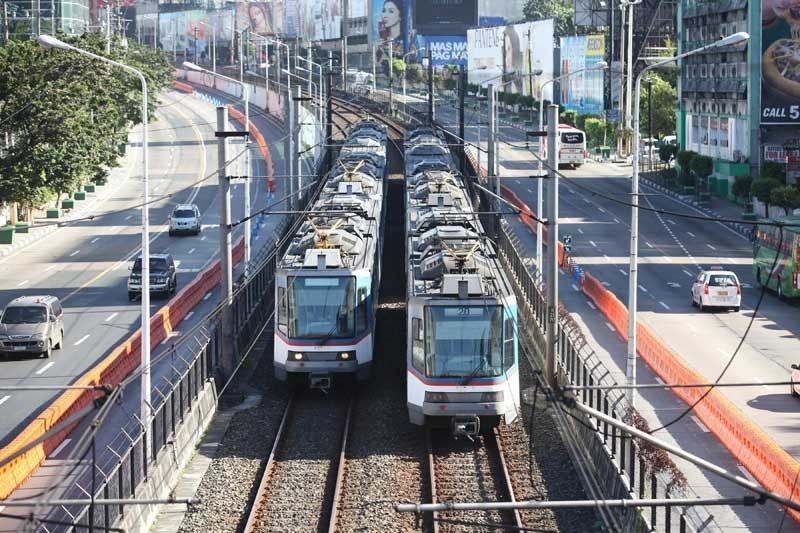MRT-3 set to increase passenger capacity

MANILA, Philippines — More passengers will be accommodated by the Metro Rail Transit-3 starting tomorrow.
The Department of Transportation (DOTr) said the rail line will increase its maximum passenger capacity from the current 13 percent to 30 percent beginning Monday.
This means that each train car will be able to accommodate 124 passengers, or 372 passengers per train set, from the current 51 passengers per train car or 153 passengers per train set to decongest the trains and prevent the spread of COVID-19.
MRT-3 director for operations Michael Capati said the move to beef up train capacity would help transport more people.
“In addition to increasing our train capacity, our passengers can also expect more trains to be deployed along the main line, shorter waiting time and faster travel time.
This is part of DOTr and MRT-3’s commitment to provide more efficient and improved service to our passengers,” Capati said.
Transportation Secretary Arthur Tugade has instructed the DOTr railways sector to increase the maximum passenger capacity of trains to accommodate more commuters following the decision of President Duterte and his Cabinet to approve the recommendations of the Economic Development Council.
“The increase in train capacity is a timely boost for the MRT-3, as the public demands higher number of public transportation in the midst of the COVID-19 pandemic,” Capati said.
The DOTr said the MRT-3 is also continuously working on the deployment of more train sets to ensure faster commute and reduced train headway.
Last Sept. 21, the rail line was able to deploy 22 train sets, the highest number of running trains recorded in its history.
The MRT-3 also increased its train speed from 30 kph to 40 kph last Oct. 1 after the installation of new long-welded rails was completed in all MRT-3 stations.
The installation was part of the massive rehabilitation program of the rail line being implemented by Sumitomo-Mitsubishi Heavy from Japan.
MRT-3 operating speed is expected to gradually increase to 50 kph by November and 60 kph by December, according to the DOTr.
In line with the increase in transport capacity, the DOTr said strict health and safety protocols recommended by health experts will be enforced inside the trains.
Meanwhle, the Land Transportation Franchising and Regulatory Board (LTFRB) has opened two more provincial routes entering Metro Manila from Pampanga and Davao City.
Under memorandum circular 2020-051, a total of 19 units were given the green light to resume daily operations starting Oct. 16.
The routes cover the operations of Dau, Mabalacat, Pampanga to Araneta Center in Cubao, Quezon City and Davao City, Davao del Sur to the Sta. Rosa Integrated Terminal in Laguna.
The LTFRB said the opening of routes went through rounds of discussion with the agency and local governments to ensure public safety amid the pandemic.
Since the transportation shutdown in March, the two new routes bring the total number of reopened provincial bus routes to 14.
The LTFRB reopened 12 routes with 286 bus units going to various points in the provinces of Laguna, Batangas, Cavite and Pampanga late last month.
The approval of local government units is needed before routes could be reopened as they are the ones who will handle incoming passengers and how to avoid possible community transmission, according to the LTFRB.
Data from the LTFRB showed that before the pandemic, there were over 7,000 bus units that plied provincial routes going in and out of Metro Manila.
The board reminded operators and the public to strictly comply with health protocols, such as physical distancing, wearing of masks, among others when riding public transportation.
Passengers would need to carry several documentary requirements before they would be allowed to board the public bus.
These include travel authority from the police, a valid identification card, written consent to undergo COVID-19 testing if required by the LGU and other documents that may be required by authorities.
The new protocols also indicate that passengers would need to secure their tickets two days before the trip, unless for an emergency. — Romina Cabrera, Ralph Edwin Villanueva
- Latest
- Trending




























